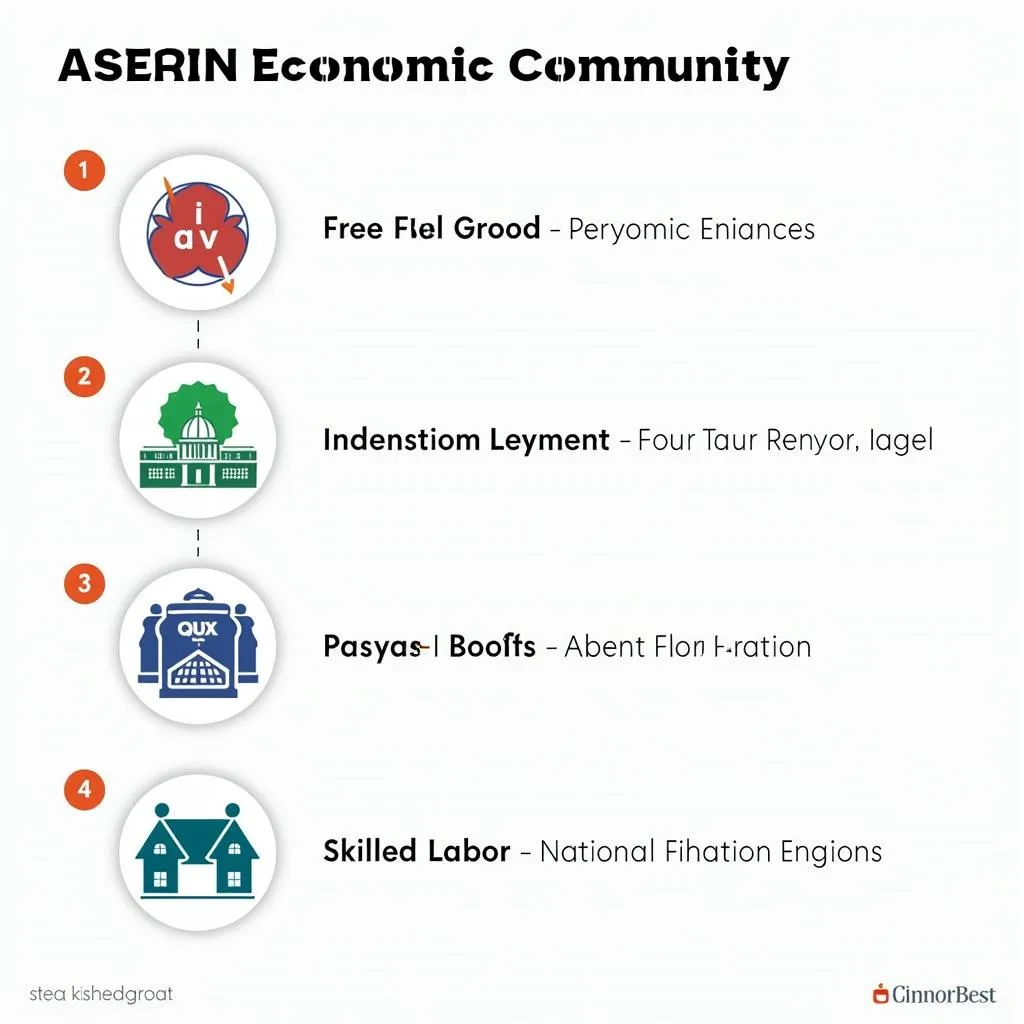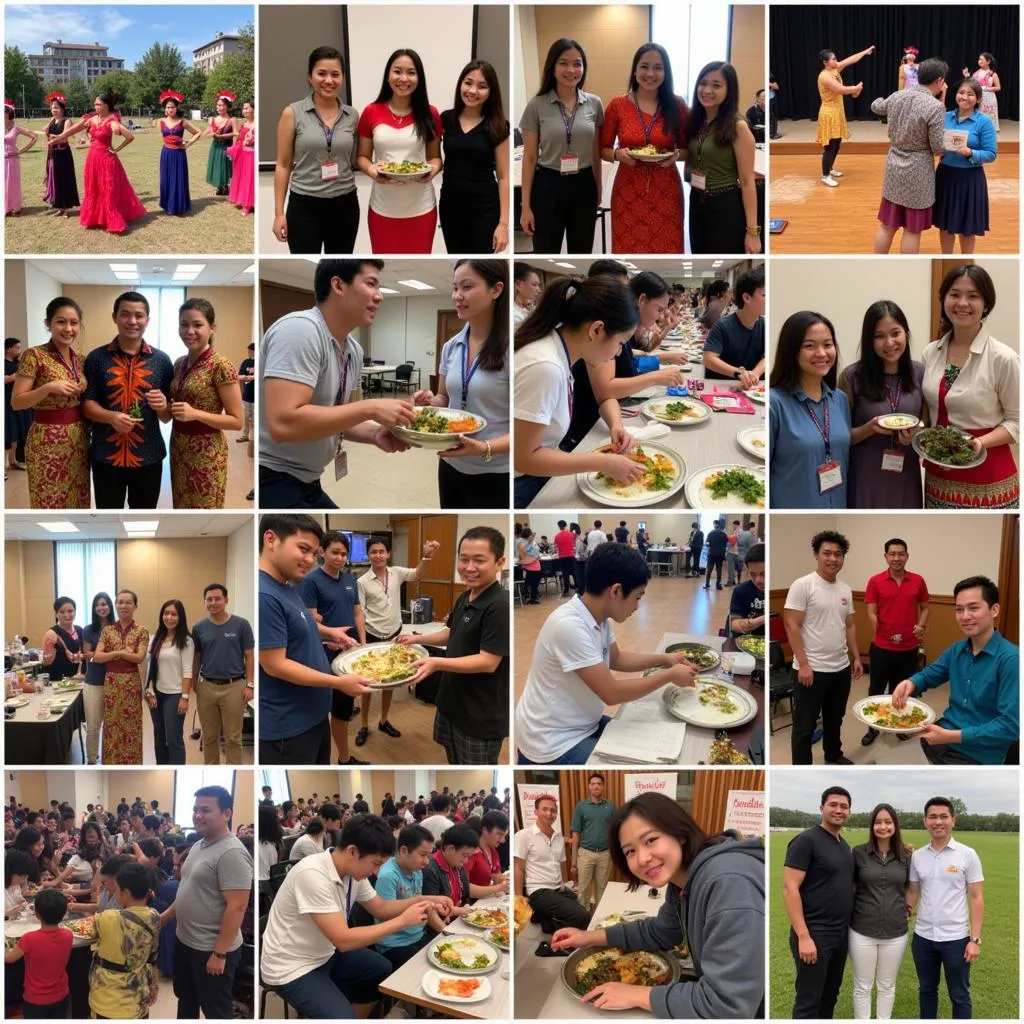The ASEAN Exchange represents a multifaceted concept encompassing the vibrant exchange of goods, services, capital, knowledge, and culture among the 10 member states of the Association of Southeast Asian Nations (ASEAN). This dynamic exchange plays a pivotal role in fostering regional integration, driving economic growth, and promoting cultural understanding across Southeast Asia.
The ASEAN Economic Community (AEC): A Cornerstone of ASEAN Exchange
At the heart of the ASEAN Exchange lies the ASEAN Economic Community (AEC), established in 2015 to create a single market and production base for the region. The AEC aims to enhance ASEAN’s competitiveness, attract foreign direct investment, and improve the lives of its 650 million citizens.
Key Pillars of the AEC:
- Free flow of goods: Reducing tariffs and non-tariff barriers to trade.
- Free flow of services: Liberalizing service sectors and facilitating cross-border service provision.
- Free flow of investment: Creating a more attractive and conducive environment for foreign investors.
- Freer flow of capital: Enhancing financial integration and facilitating cross-border capital flows.
- Free flow of skilled labor: Allowing skilled workers to move more freely within ASEAN.
 ASEAN Economic Community Pillars
ASEAN Economic Community Pillars
Benefits of ASEAN Exchange:
The ASEAN Exchange offers numerous benefits to its member states and the region as a whole, including:
- Increased trade and investment: Lower trade barriers and increased market access stimulate trade and attract investment within ASEAN.
- Economic growth and development: Enhanced economic cooperation promotes innovation, productivity, and job creation.
- Regional stability and security: Closer economic ties foster political and social stability, reducing the likelihood of conflict.
- Cultural understanding and tolerance: The exchange of ideas, traditions, and people promotes cross-cultural understanding and appreciation.
Beyond Economics: Cultural and Educational Exchange in ASEAN
While economic integration remains a primary focus, ASEAN Exchange extends beyond trade and investment to encompass cultural and educational cooperation.
ASEAN’s Cultural and Educational Initiatives:
- ASEAN Cultural Fund: Supports cultural projects and exchanges among member states.
- ASEAN University Network: Promotes academic collaboration, student mobility, and research partnerships.
- ASEAN Youth Exchange: Facilitates cultural immersion programs and youth leadership development.
 ASEAN Cultural Exchange Programs
ASEAN Cultural Exchange Programs
Challenges and Opportunities in ASEAN Exchange:
Despite progress, challenges remain in realizing the full potential of ASEAN Exchange:
- Development gaps: Disparities in economic development among member states require targeted initiatives.
- Non-tariff barriers: Addressing remaining non-tariff barriers is crucial for seamless trade.
- Infrastructure development: Enhancing connectivity and infrastructure is essential for facilitating trade and investment.
However, these challenges also present opportunities for further collaboration and innovation within ASEAN.
The Future of ASEAN Exchange:
As ASEAN continues to evolve, the ASEAN Exchange will play an even more critical role in shaping the region’s future. Deepening economic integration, fostering innovation and digitalization, and promoting sustainable development will be key priorities.
“ASEAN is not just about economic integration, but also about the exchange of ideas, culture, and values. It is about building a community where people can live in peace, harmony, and prosperity.” – Dr. Surin Pitsuwan, Former Secretary-General of ASEAN
Conclusion:
The ASEAN Exchange represents a dynamic force driving regional integration, economic growth, and cultural understanding in Southeast Asia. By embracing collaboration, addressing challenges, and seizing opportunities, ASEAN can harness the full potential of its exchange and secure a brighter future for its people.
FAQs about ASEAN Exchange:
-
What is the ASEAN Exchange?
The ASEAN Exchange refers to the multifaceted flow of goods, services, capital, knowledge, and culture among the 10 ASEAN member states. -
How does ASEAN Exchange benefit businesses?
Businesses benefit from increased market access, reduced trade barriers, and a more attractive investment environment. -
What are the key challenges facing ASEAN Exchange?
Challenges include development gaps, non-tariff barriers, and the need for improved infrastructure. -
How does ASEAN promote cultural exchange?
ASEAN initiatives like the ASEAN Cultural Fund and ASEAN University Network support cultural and educational collaborations. -
What is the future outlook for ASEAN Exchange?
ASEAN Exchange is expected to play a pivotal role in deepening regional integration, fostering innovation, and promoting sustainable development.
 ASEAN Future Economic Outlook
ASEAN Future Economic Outlook
Need Help Navigating the ASEAN Exchange?
Contact us at:
Phone Number: 0369020373
Email: [email protected]
Address: Thôn Ngọc Liễn, Hiệp Hòa, Bắc Giang, Việt Nam.
Our dedicated team is available 24/7 to assist you.

